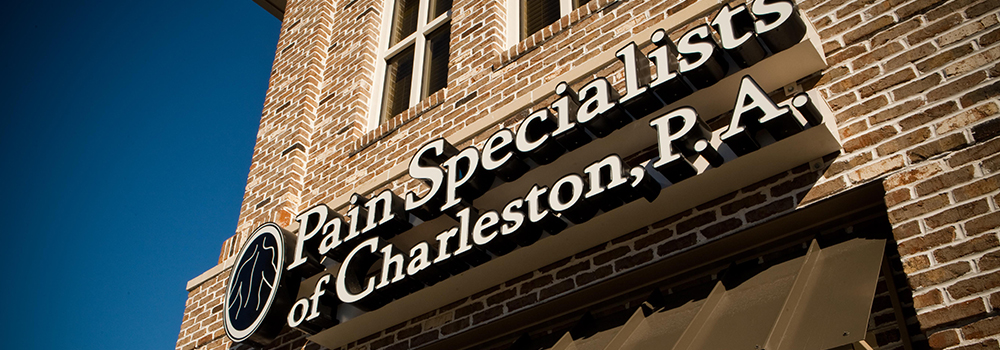Whether you like to spend your time on the tennis court or frequently test your limits in the gym, one thing is for sure: pain in your shoulder impacts every part of your life.
Every year, almost 2 million people in the U.S. pay a visit to their doctor’s office for a torn rotator cuff.
An injured rotator cuff can not only take away your favorite pastimes but can make the simplest tasks, like brushing your hair, a painful experience.
Will rest and ice solve all your woes, or is a visit to your pain management clinic in your future? Keep reading to find out!

The Anatomy of the Rotator Cuff
The rotator cuff refers to the muscles and tendons around your shoulder joint. The shoulder comprises three bones: the humerus, the scapula, and the clavicle. The rotator cuff connects your shoulder blade (scapula) to your upper arm bone (humerus), allowing you to raise your arm above your head and, as the name suggests, rotate your shoulder and arm.
There are four rotator cuff muscles, each connecting to the rounded top of your humerus by tendons that fit into a socket in your scapula. This connection allows you to rotate and move your arm as you see fit.
When the rotator cuff muscles and tendons work together, your shoulder movements are fluid and stable. However, when the rotator cuff suffers an injury or tear, you can physically feel your shoulder’s movements change and weaken.
Signs of a Torn Rotator Cuff
There are two kinds of rotator cuff tears, each classified based on their size and level of muscle atrophy: a partial tear and a full-thickness tear.
Partial Rotator Cuff Tear
A partial tear occurs when the tendon doesn’t completely detach from the bone. According to the Ellman classification, there are three grades of partial tears:
- Grade 1: Less than 3 mm (25% thickness)
- Grade 2: Sized 3 to 6 mm (25% to 50% thickness)
- Grade 3: Larger than 6 mm (50% thickness)
In these cases, the tendon is still attached to the bone but is thinner than usual.
Full-Thickness Tear
To be classified as a full-thickness tear, the tendon has to entirely or almost completely detach from the bone. When a small part of the tendon remains attached and surpasses grade 3 of a partial tear, it is considered a full-thickness incomplete tear.
When a tendon is completely detached, creating a hole in the tendon, it is referred to as a full-thickness complete tear.
Signs and Symptoms of a Torn Rotator Cuff
Tears can develop slowly over time or happen suddenly and without warning. If your rotator cuff is torn, you will likely experience symptoms, including:
- Pain at rest and at night
- Pain when lifting or lowering your arm
- Shoulder and arm weakness, specifically during movement
- A crackling sensation (crepitus)
The pain that accompanies a rotator cuff tear may be mild or even go unnoticed in the beginning but over time, it can grow in severity.
If you begin to experience pain and believe it may be a possible rotator cuff injury, visit the local’s trusted clinic for pain management in Charleston, SC, for an appointment.
Can a Rotator Cuff Heal On its Own? Here’s How a Pain Management Physician Can Help
Between 80 and 85 percent of patients with a rotator cuff tear can find relief with nonsurgical treatment. At Pain Specialists of Charleston, we believe in interventional pain management techniques, allowing us to use a variety of physical rehabilitation exercises, massage therapy, and injections or nerve blockers to treat those in search of pain management near you.
After an initial assessment of your injury, medical history, and lifestyle, our treatment of a rotator cuff tear may include:
- Rotator cuff exercises and physical therapy – Our team will provide exercises focused on strengthening your shoulder and restoring movement and flexibility to the surrounding area.
- Corticosteroid injections – Administered to the site of your pain, these injections decrease the inflammation and provide much-needed pain relief.
- Lifestyle modifications – In addition to our pain management methods, we may also recommend lifestyle alterations, such as ample rest and avoiding certain activities that could increase your pain or aggravate the injury.
Don’t Second Guess Your Shoulder Pain–Let Pain Specialists of Charleston Help
We never realize how important our shoulder is until our everyday activities are hindered by limited movement and pain, such as brushing our hair or getting dressed in the morning.
At our Charleston pain management clinic, we aim to help you reclaim your quality of life by providing methods and treatment options to help you get back to your life without worrying about recovery time from surgery or medications.
We’re open five days a week and accepting new patients – no referral needed! Contact us to get started!
Request Appointment | Meet Pain Doctors | Contact Us | Visit Us
Additional Helpful Articles:
What Should I Expect During My First Pain Management Appointment?
Interventional Pain Management: Everything You Need to Know
What Does a Pain Management Physician Do?
Can a Medical Massage Actually Relieve My Chronic Pains?
Why Do Side Sleepers Wake Up to Shoulder Pains?
Get to Know Pain Management Physicians:
Our Services:
Diagnosis | Treatment | Interventional Pain Management | TRICARE | Wellness | Clinical Trials | Worker’s Compensation | Neurology | Imaging/ MRI
Published March 2025

